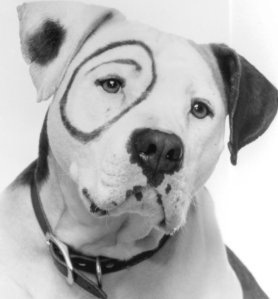Don’t you just love it when something forces you to think and learn? We do!
Raising Blanc de Hotot have given us a whole new topic to explore and learn. To be frank, we’re just working to figure out the genetics piece, and I’m also deep in the research different factors affecting spotted rabbits.
Genetically speaking, the Blanc de Hotot is a black bunny with a really, REALLY large white spot! Here’s the starting point: the genetics of a purebred Hotot should be aaBBCCDDEEEnEnDudu. And the broken gene in an Hotot is also called the “English Spotting” gene.
I’m sure that means something to you genetic gurus out there. I’m still figuring it out, personally!
Since I’m not fluent with the genetic identifications here, another thing we’re learning is that different Hotot sports have different names. I’ve collected photos from around the internet with explanations of what these markings are called. Thank you to anyone who actually took these photos – in many cases I haven’t been able to identify the owner of the photo or rabbit.
If a “broken” Hotot produces a show marked animal (dark eyes, white rabbit, black spectacles or eye bands) and looks like this:
Then a “solid” Hotot produces a Piebald, which looks a lot like a Dutch rabbit:
Now, within the piebald category there are also silver pied. This is a rabbit exhibiting the Dutch markings but with silvering throughout the black blanket of its coloring:

See the white silvering in the black? That’s a giveaway that you’ve got an hotot! Photo courtesy of L. Staley.
The markings of the Hotot also have specific names. When an hotot has only one eye (instead of both) with the black fur rimming it is called a boxer:
(And reminds me of Petey from Little Rascals!):
The original goal of the Blanc de Hotot was to build a breed of pure white rabbit with dark eyes. The woman credited with starting the breed is Madame Eugenie Bernhard of Northern France. Because of her influence, when you run across an hotot with NO eye bands at all, it’s called a Bernhard:

A bernhard, named after the founder of the breed, has no black rings of fur around their eyes. Photo courtesy of L. Staley
Another interesting variation of the Blanc de Hotot sport is the evidence of blue “marbling” in their eyes. Marbling refers to having blue spots or streaks on an otherwise brown iris. This is not a desirable trait, but does come up:

Most of the time the marbling will not be the entire eye, although it’s possible for an entirely blue iris to occur.
Many times I am confused by descriptions and need a visual to understand what people are mentioning. I hope this little pictorial will help others as we learn about this wonderful breed. Many thanks to all who offered photos for us to see! We welcome your comments!









